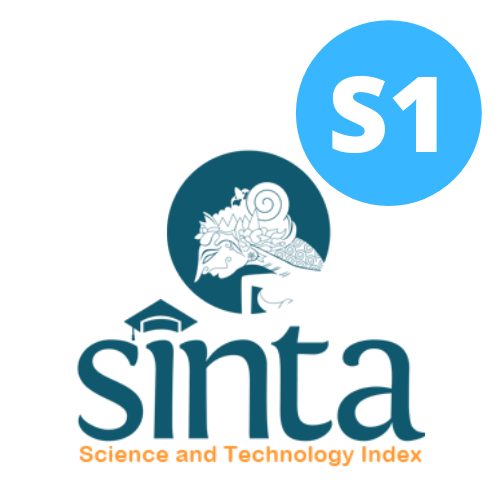Differences in Serum 25(OH)D Levels, Intake of Vitamin D, Magnesium, and Zinc in Obese and Normal Nutritional Status
Perbedaan Kadar 25(OH)D Serum, Asupan Vitamin D, Magnesium dan Zink pada Status Gizi Obesitas dan Normal

Downloads
Background: Vitamin D deficiency affects about 50% of people worldwide and 95% of Indonesian women of childbearing age. Micronutrient intake can impact serum 25(OH)D levels. Obesity is linked to serum 25(OH)D levels and micronutrients like zinc, magnesium, and vitamin D consumption.
Objectives: This study aims to determine the differences in serum levels of 25(OH)D, vitamin D, magnesium, and zinc intakes in obese and normal students at the Faculty of Medicine, Andalas University, Padang.
Methods: This research was observational with a comparative case-control design at the Faculty of Medicine and Biomedical Laboratory, Andalas University, from November 2021 to July 2022. Systematic random sampling was used to select the sample, obtaining 64 female students with obesity and normal nutritional status. Data were collected by blood sampling and questionnaires. Bivariate analysis used an independent t-test.
Results: The results showed the mean serum levels of 25(OH)D, vitamin D, magnesium, and zinc intakes in the obese group were 10.98 ± 2,12 ng/mL; 5.07 ± 1,47 mcg; 166.04 ± 65.27 mcg and 6.88 ± 2.73 mcg, while the mean in the standard group were 13.94 ± 4.57 ng/mL; 5.92 ± 1.77 mcg; 205.88 ± 92.84 mcg; and 7.62 ± 2.67 mcg. The mean serum levels were 25(OH)D, vitamin D, magnesium, and zinc intakes were lower in the obese group (p-value = 0.001; 0.040; 0.044; 0.280).
Conclusions: There are significant differences in serum levels of 25(OH)D, vitamin D, and magnesium in female students with obese and normal nutritional status. There is no significant difference in zinc intake in female students with obese and normal nutritional status.
Tehrani, F. R. & Behboudi-Gandevani, S. Vitamin D and Human Reproduction. in A Critical Evaluation of Vitamin D - Basic Overview (InTech, 2017). doi:10.5772/67394.
Sizar O, Khare S & Goyal A. Vitamin D Deficiency. (StatPearls Publishing, 2021).
Sarany Palaniswamy. Vitamin D Status and Its Association with Leukocyte Telomere Length, Obesity and Inflammation in Young Adults : a Northern Finland Birth Cohort 1966 study. (2018).
Aji, A. S., Erwinda, E., Yusrawati, Y., Malik, S. G. & Lipoeto, N. I. Vitamin D Deficiency Status and Its Related Risk Factors during Early Pregnancy: A Cross-sectional Study of Pregnant Minangkabau Women, Indonesia. BMC Pregnancy Childbirth 19, (2019).
Aji, A. S., Yerizel, E., Desmawati, D. & Lipoeto, N. I. Low Maternal Vitamin D and Calcium Food Intake during Pregnancy Associated with Place of Residence: A cross-sectional study in west sumatran women, Indonesia. Open Access Maced J Med Sci 7, 2879–2885 (2019).
Bauer, A. et al. Influence of Physical Activity on Serum Vitamin D Levels in people with Multiple Sclerosis. PLoS One 15, e0234333 (2020).
Webster-Gandy Joan, Angela Madden & Michelle Holdsworth. Gizi dan Dietika. (ECG, 2018).
Uwitonze, A. M. & Razzaque, M. S. Role of Magnesium in Vitamin D Activation and Function. J Am Osteopath Assoc 118, 181 (2018).
Amos, A. & Razzaque, M. S. Zinc and Its Role in Vitamin D Function. Curr Res Physiol 5, 203–207 (2022).
Shekar Meera & Popkin Barry. Obesity. (World Bank Group, 2020).
Badan Perencanan Pembangunan Nasional. Pembangunan Gizi di Indonesia. (2019).
Putu, L. & Sundari, R. Defisiensi Vitamin D pada Obesitas. Sport and Fitness Journal 6 (2018).
Mansouri, M. et al. Vitamin D Deficiency in Relation to General and abdominal Obesity among High Educated Adults. Eating and Weight Disorders - Studies on Anorexia, Bulimia and Obesity 24, 83–90 (2019).
Fiamenghi, V. I. & Mello, E. D. de. Vitamin D Deficiency in Children and Adolescents with Obesity: a meta-analysis. J Pediatr (Rio J) 97, 273–279 (2021).
Mohammed Khalid Mansoor, K., Iqbal, S., Nowshad, N. & Abdelmannan, D. Interplay between Vitamin D, Obesity, and Other Metabolic Factors in a Multiethnic Adult Cohort. Dubai Diabetes and Endocrinology Journal 26, 152–157 (2020).
Vranić, L., Mikolašević, I. & Milić, S. Vitamin D Deficiency: Consequence or Cause of Obesity? Medicina (Kaunas) 55, (2019).
Jiang, S. et al. Association between Dietary Mineral Nutrient Intake, Body Mass Index, and Waist Circumference in U.S. Adults using Quantile Regression Analysis NHANES 2007–2014. PeerJ 8, e9127 (2020).
Peabody T. Association of Micronutrient Inadequacy and Body Mass Index in Young Adults. (2020).
Santrock J W. Life-Span Development (Perkembangan Masa Hidup). (Erlangga, 2012).
Schaefer, E. & Nock, D. The Impact of Preconceptional Multiple-Micronutrient Supplementation on Female Fertility. Clin Med Insights Womens Health 12, 1179562X1984386 (2019).
Pangkalan Data Pendidikan Tinggi. Profil Perguruan Tinggi Universitas Andalas. https://pddikti.kemdikbud.go.id/data_pt/MTgwNENDNjYtQ0IxOS00RTkzLThCM0YtMUFGNzFBRDQ2OUZG (2022).
Hocaoğlu-Emre, F. S., Sarıbal, D. & Oğuz, O. Vitamin D Deficiency and Insufficiency According to the Current Criteria for Children: Vitamin D Status of Elementary School Children in Turkey. J Clin Res Pediatr Endocrinol 11, 181–188 (2019).
Khodabakhshi, A., Mahmoudabadi, M. & Vahid, F. The Role of Serum 25 (OH) Vitamin D level in The Correlation between Lipid Profile, Body Mass Index (BMI), and Blood Pressure. Clin Nutr ESPEN 48, 421–426 (2022).
Maviş, M. E. et al. Evaluation of Vitamin D levels and Body Mass Indexes of University Employees. Bangladesh Journal of Medical Science 19, 229–236 (2020).
Jang, H., Lee, Y. & Park, K. Obesity and Vitamin D Insufficiency among Adolescent Girls and Young Adult Women from Korea. Nutrients 11, (2019).
Lorensia, A., Suryadinata, R. V. & Inu, I. A. Comparison of vitamin D status and physical activity related to obesity among tertiary education students. J Appl Pharm Sci 108–118 (2022) doi:10.7324/JAPS.2022.120412.
Nikolova, M. & Penkov, A. Dietary intake of vitamin D in adults with overweight and obesity. Proceedings of the Nutrition Society 79, E346 (2020).
Shatwan, I. M. & Almoraie, N. M. Correlation between Dietary Intake And Obesity Risk Factors among Healthy Adults. Clinical Nutrition Open Science 45, 32–41 (2022).
Farhat, G., Lees, E., Macdonald-Clarke, C. & Amirabdollahian, F. Inadequacies of Micronutrient Intake in Normal Weight and Overweight Young Adults Aged 18–25 Years: a Cross-sectional Study. Public Health 167, 70–77 (2019).
Dai, H., Song, R., Barth, M. & Zheng, S. Dietary Nutrient Intake and Obesity Prevalence among Native American Adolescents. International Journal of Public Health Science (IJPHS) 7, 114 (2018).
Mardalena. Dasar - Dasar Ilmu Gizi dalam Keperawatan. (Pustaka Baru Ekspress, 2021).
Rosique-Esteban, N., Guasch-Ferré, M., Hernández-Alonso, P. & Salas-Salvadó, J. Dietary Magnesium and Cardiovascular Disease: A Review with Emphasis in Epidemiological Studies. Nutrients 10, 168 (2018).
Castellanos-Gutiérrez, A., Sánchez-Pimienta, T. G., Carriquiry, A., Da Costa, T. H. M. & Ariza, A. C. Higher Dietary Magnesium Intake is Associated with Lower Body Mass Index, Waist Circumference and Serum Glucose in Mexican adults. Nutr J 17, (2018).
Jeser T A & Santoso A H. Hubungan Asupan Serat dalam Buah dan Sayut dengan Obesitas pada Usia 20 - 45 Tahun di Puskesmas Kecamatan Grogol Petamburan Jakarta Barat. Tarumanegara Medical Journal 4, 164–171 (2021).
Nouri, M., Shateri, Z. & Faghih, S. The Relationship between Intake of Fruits, Vegetables and Dairy Products with Overweight and Obesity in a Large Sample in Iran: Findings of STEPS 2016. Front Nutr 9, (2023).
Ju, L. et al. Dietary Micronutrient Status and Relation between Micronutrient Intakes and Overweight and Obesity among Non-Pregnant and Non-Lactating Women Aged 18 to 49 in China. Nutrients 14, 1895 (2022).
Kementerian Kesehatan. Permenkes 28 Tahun 2019 tentang Angka Kecukupan Gizi yang Dianjurkan untuk Masyarakat Indonesia. Preprint at (2019).
Shams, B. et al. The Relationship of Serum Vitamin D and Zinc in a Nationally Representative Sample of Iranian Children And Adolescents: The CASPIAN-III Study. Med J Islam Repub Iran 30, 430.
Vázquez-Lorente, H. et al. Effectiveness of Eight-Week Zinc Supplementation on Vitamin D3 Status and Leptin Levels in a Population of Postmenopausal Women: a Double-blind Randomized Trial. Journal of Trace Elements in Medicine and Biology 65, 126730 (2021).
Sundari, D., Almasyuri & Lamid A. Pengaruh Proses Pemasakan terhadap Komposisi Zat Gizi Bahan Pangan Sumber Protein. Media Litbangkes 25, 235–242 (2015).
Copyright (c) 2024 Amerta Nutrition

This work is licensed under a Creative Commons Attribution-ShareAlike 4.0 International License.
AMERTA NUTR by Unair is licensed under a Creative Commons Attribution-ShareAlike 4.0 International License.
1. The journal allows the author to hold the copyright of the article without restrictions.
2. The journal allows the author(s) to retain publishing rights without restrictions
3. The legal formal aspect of journal publication accessibility refers to Creative Commons Attribution Share-Alike (CC BY-SA).
4. The Creative Commons Attribution Share-Alike (CC BY-SA) license allows re-distribution and re-use of a licensed work on the conditions that the creator is appropriately credited and that any derivative work is made available under "the same, similar or a compatible license”. Other than the conditions mentioned above, the editorial board is not responsible for copyright violation.












































